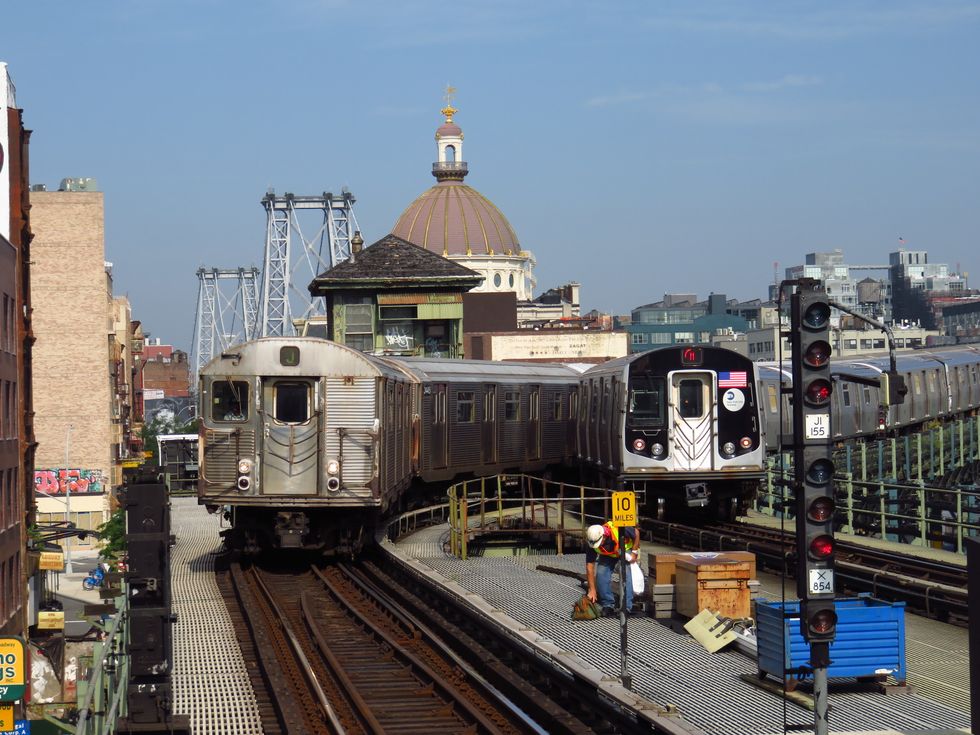In late April, after years of delays and issues with the new R179 subway cars, the MTA finally retired its veteran R32 subway cars dating from 1964. The retirement of the R32s marked the end of an illustrious career spanning more than half a century, in which the cars ran on every lettered line and covered many millions of miles of each. The R32s had outlasted five car types built after them,some almost a decade younger,and all expectations. They were built to last 35 years, but lasted more than 50% longer than their specified lifespan.

In 1964, LBJ was president, the Jet Age had just begun, New York was hosting its third World's Fair, and the Space Race was underway. In this atmosphere of futurism, the Budd Company, a pioneer of stainless steel construction, was contracted to build 600 new subway cars for New York City. The Brightliners, as they were nicknamed, were the first mass-produced stainless steel subway cars ever built for NYC. Their revolutionary construction allowed each car to be two tons lighter than their predecessors. On September 9, 1964, the sparkling new Brightliners made their glorious debut with a special trip to Grand Central Terminal. Their arrival ushered in a new chapter in NYC Subway history-all future subway cars would be built with stainless steel carbodies.

Since 1964, the R32s served NYC for over five decades with no major issues, despite the later R46 and R68 cars being considered "lemons". In the 1980s, they received a major overhaul to retrofit them with air conditioning and extend their useful lives into the 21st century. By the late 2000s, the end seemed near for the R32s. The new, high-technology R160 subway cars were entering service, and the 1960s era trains (R32, R38, R40, R40M and R42) were being retired. By 2009, the R38 ,R40 and R40M had bid NYC goodbye, and only 232 of 600 R32s plus a handful of R42s remained. However, the R44s from 1971 were prematurely retired in 2010 due to irreparable structural issues, leaving the remaining R32s and R42s to soldier on until the mid-2010s, when the R179s would replace them.

In their final years of service, the R32s received substantial criticism for their poor reliability and outdated technology. In 2011, the New York Times called them "a dreary reminder of an earlier subterranean era". For years, the C line, which was served by R32s, was ranked the worst in the subway system. It's no secret that maintaining a half century old workhorse well past its prime is no easy task. But against all the odds, the R32s just kept rolling and rolling. On September 9, 2014, they reached 50 years of service, a feat no post-war subway car had achieved. In 2019, the R32s became the second longest running NYC subway cars ever. By this point the R179s were slowly entering service. But with the R179s plagued by various issues, there was seemingly no end in sight for the R32s. They were mechanically worn out yet still structurally sound, a testament to the superior craftsmanship of the legendary Budd Company. And more importantly, they were still more reliable than trains 50 years younger.

By the beginning of 2020, the R179s had all their major issues resolved, after years of delays and problems big and small. And with the Covid-19 pandemic in full swing, subway ridership dwindled, and for the first time since 1964, the R32s were finally no longer needed for service. Things have come full circle for the R32s. They revolutionized the subway in 1964 and went on to serve it for 56 years, compared to 40 for the average subway car. The greatest NYC subway car of all time has been retired at last, but it will be remembered by New Yorkers for far more than another 56 years.













